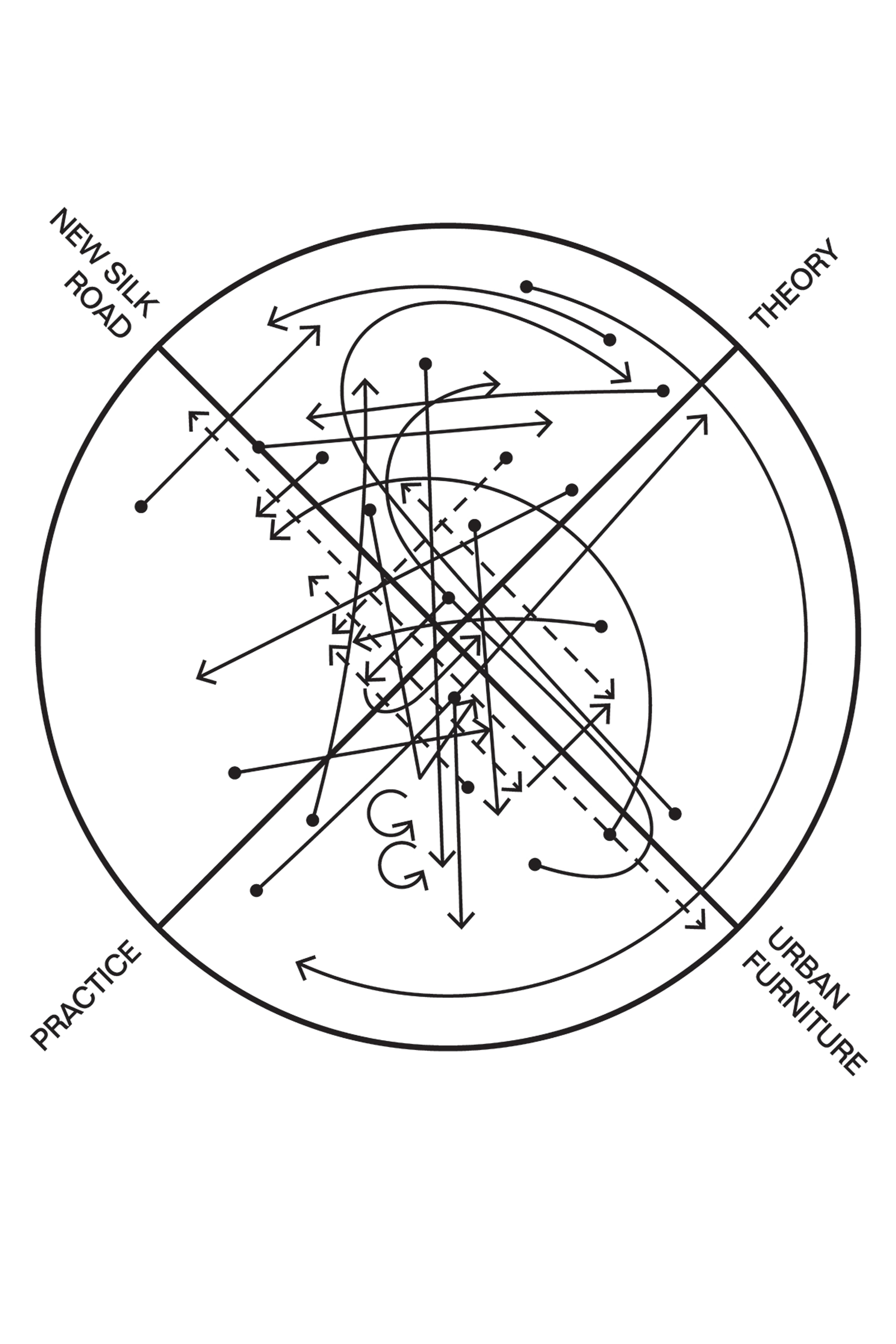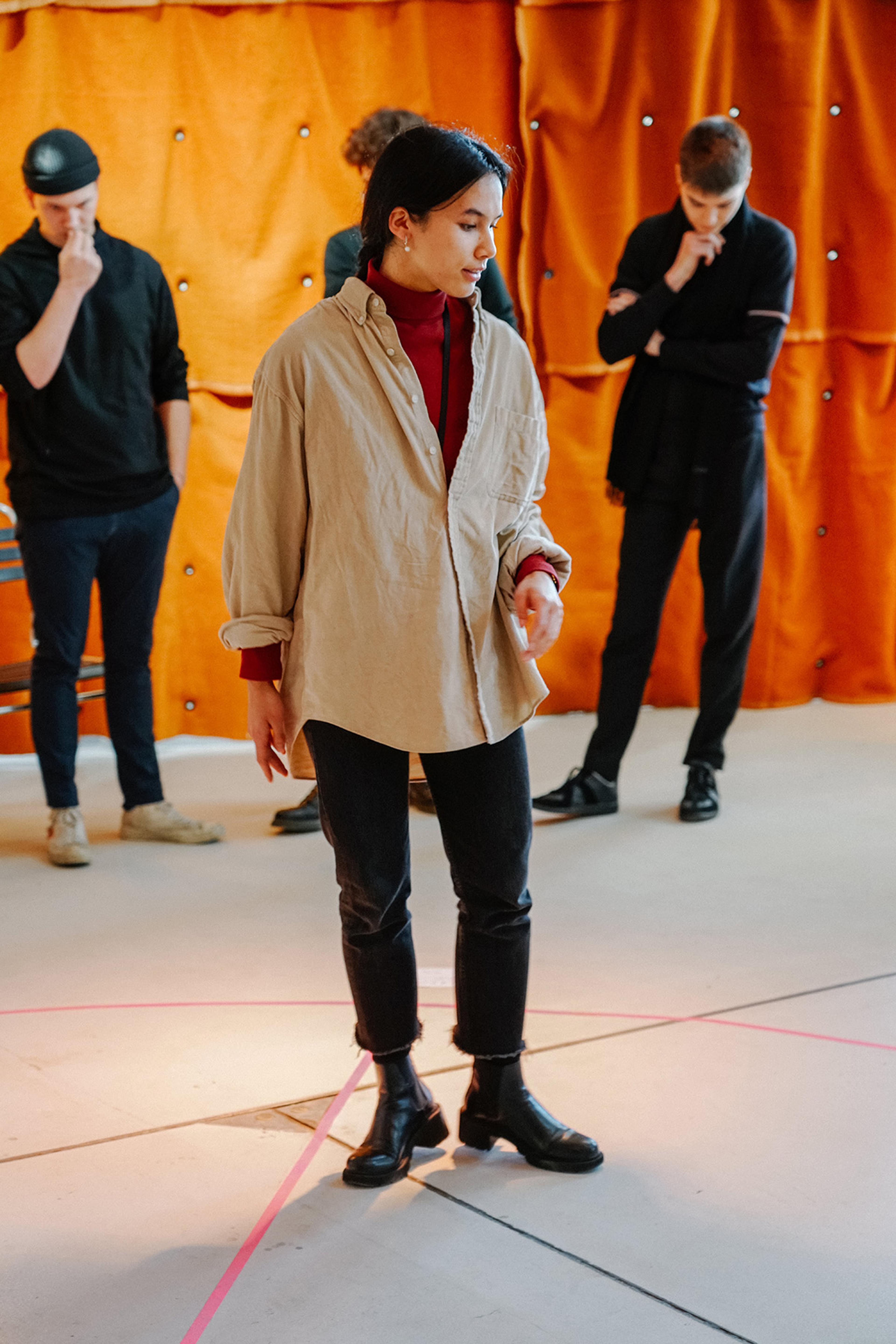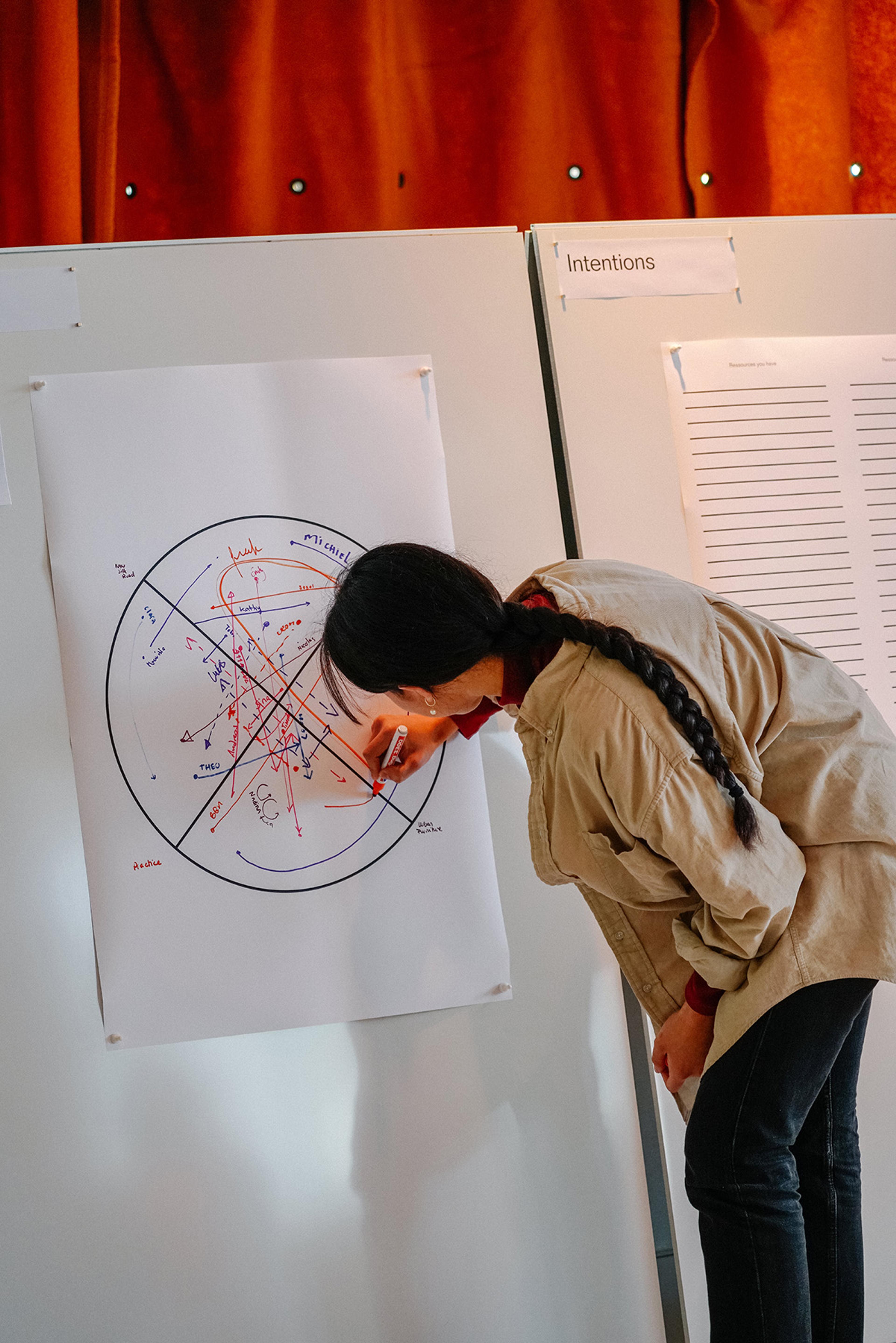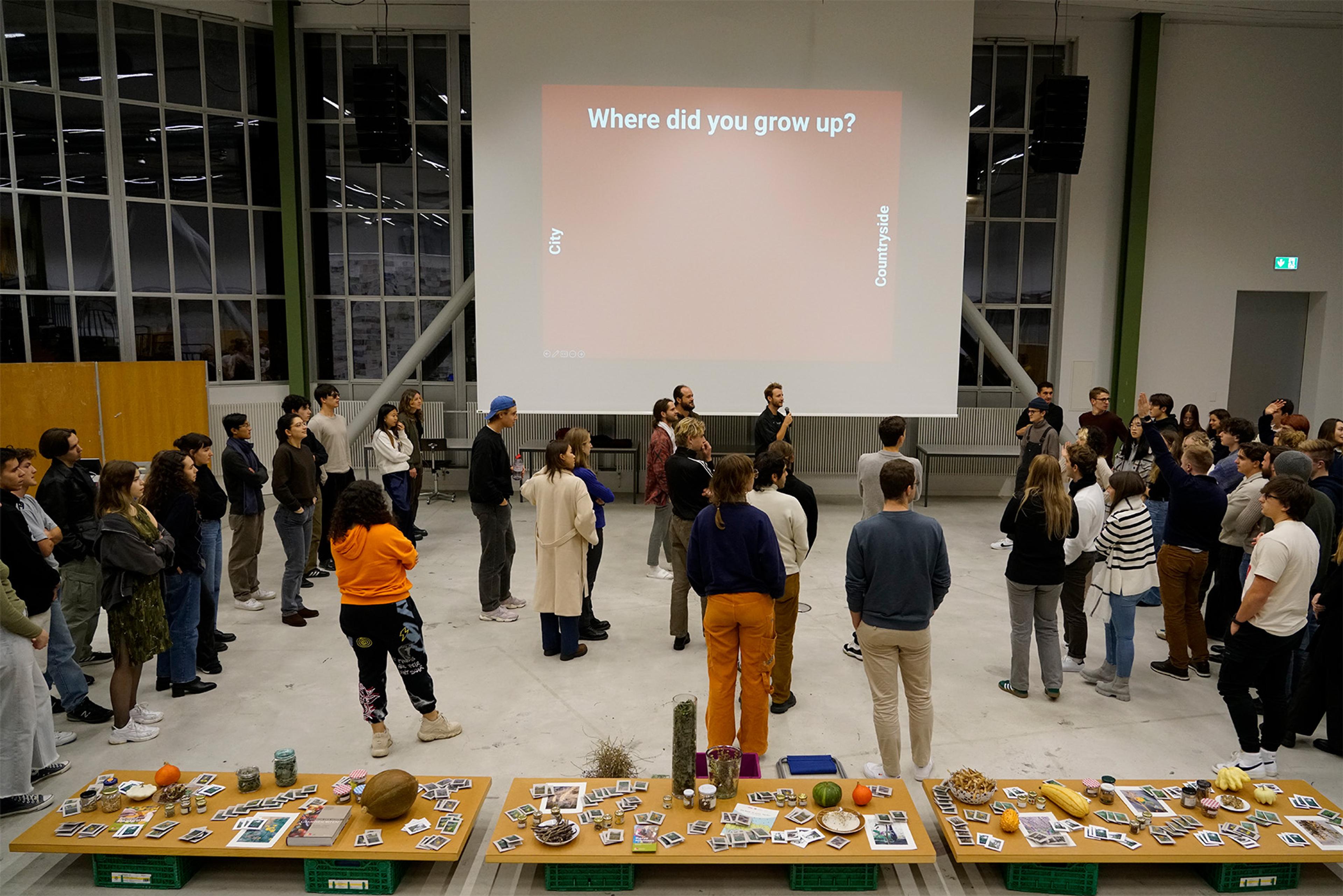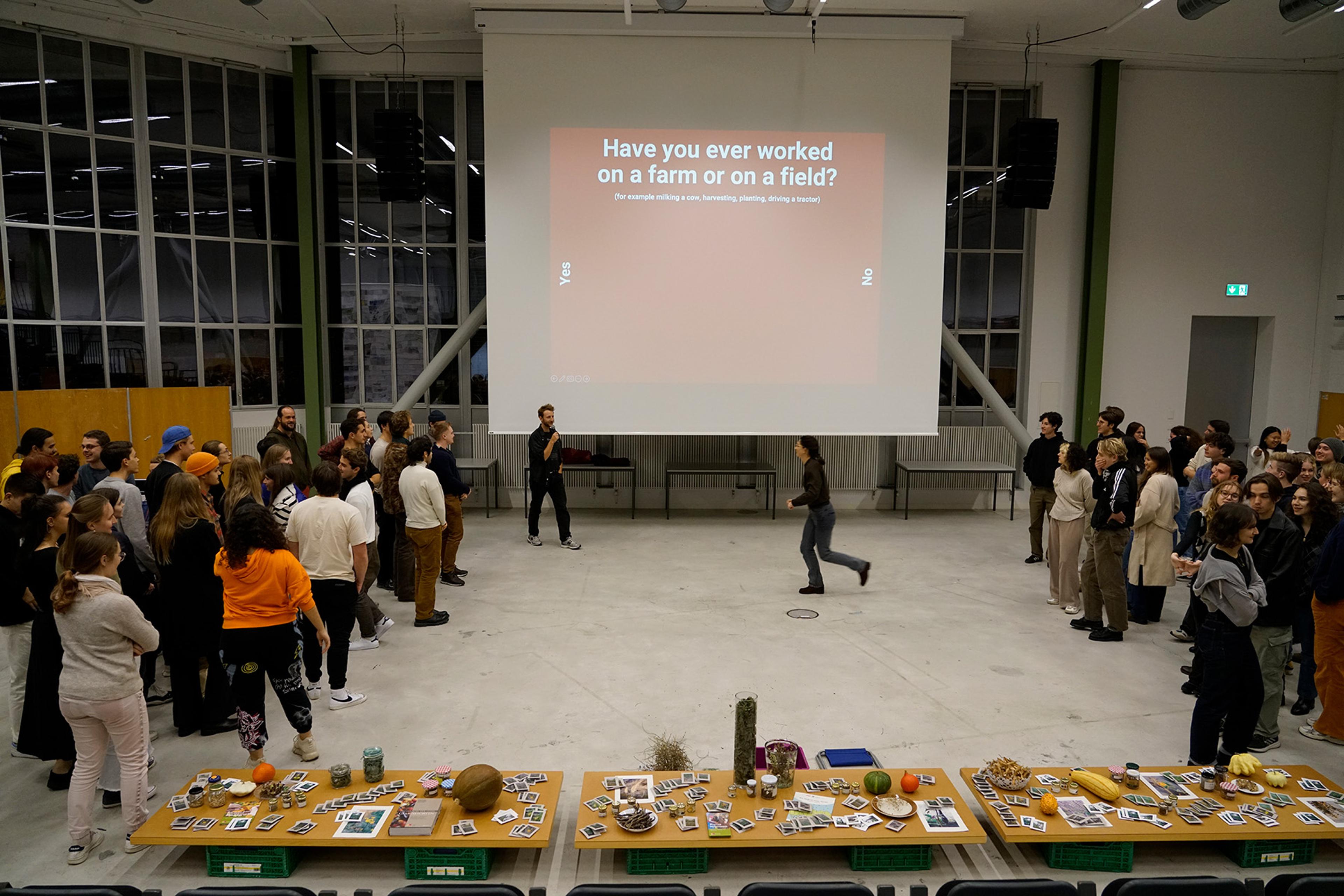Body Statistics
Description
Body Statistics is a playful exercise where participants position themselves regarding to specific questions or themes and in relation to each other. These exercises relate to the concept of Sociometry by Jakob L. Moreno (1889-1974). Relating to the latin terms of, ‘socius’ meaning companion, and ‘metrum’ meaning measure, Moreno defined sociometry as “the inquiry into the evolution and organization of groups and the position of individuals within them.”
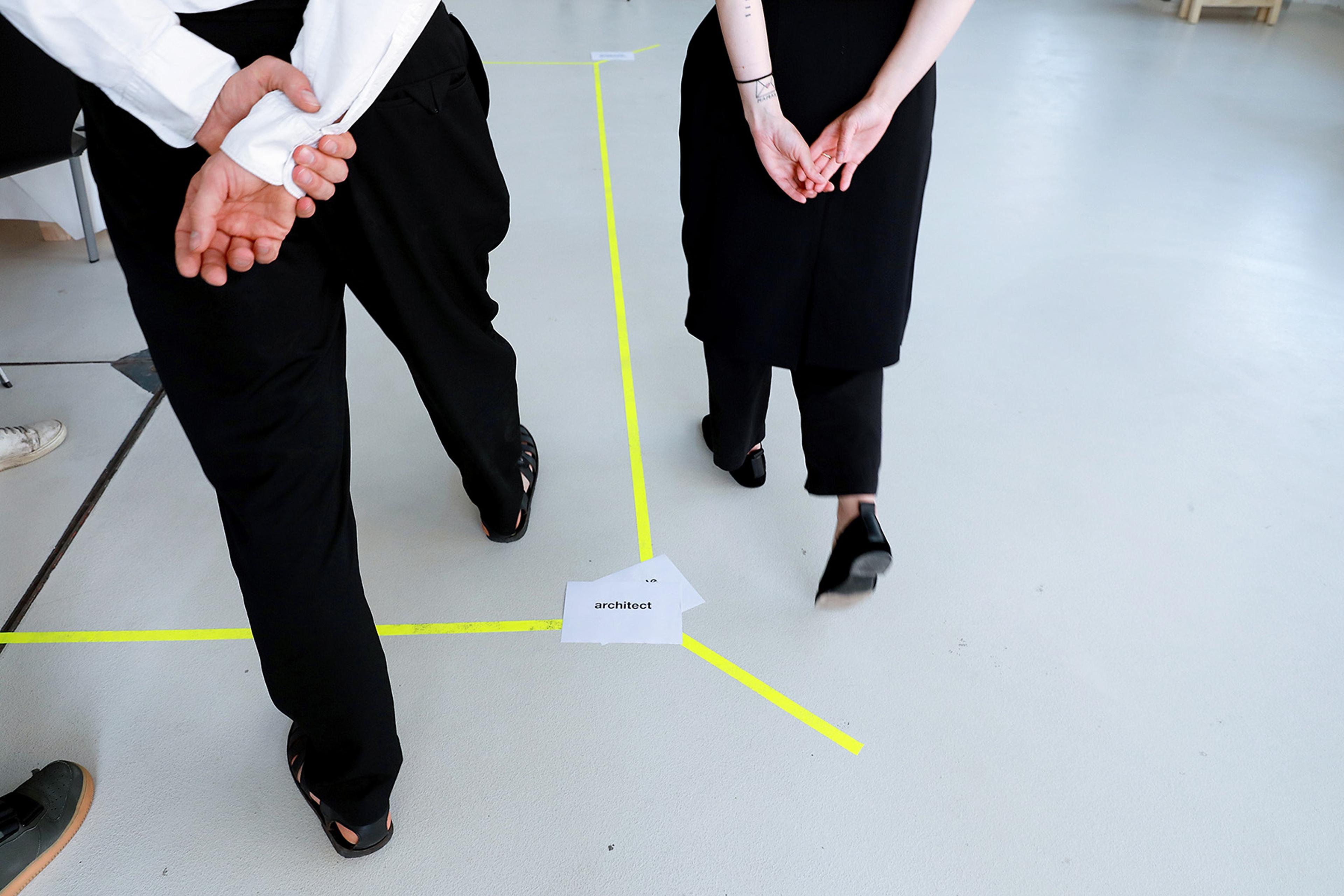
Positioning game regarding the role of the architect. (Photograph: Blerta Kambo)
The only thing one needs for this is enough space, a group of people and someone instructing the group. Some (colorful) tape to make markings on the floor is also useful. Based on the questions asked, everyone positions along the respective axis in space. For example: “How old are you? Position yourself between 0 and 100.” Or: “At what scale do you like to work? Position yourself between a global scale and a door handle.” Or create a spatial reference point and exercise orientation. “If the center of the space is the building we are in, where did you grow up relative to it” Position yourself in the room, geographically relating to the celestial points (north-south-west-east from there) and to each other.” Focus on details in the way you ask questions: “How many semester did you study already?” or “How many semesters did you study architecture already” The questions vary according to the topic the group is engaged in.
How to Use
Body Statistics help to analyze the individual position(s) and by that support self-awareness of the participants and clarify their potential role within a group. The format enables a light way of exchange and helps to create an informal atmosphere, leading towards a collective and expanded understanding of the group composition. It may happen that every individual stands out from the group once, even if for completely different reasons. The individual thus remains visible in the group and differences become the complementary strength of the collective.
Context
We use Body Statistics often to lay the foundations for our collaboration with and between students by getting to know each other better. Similarly, it can serve as an “active break” by moving through space collectively. It can help to form groups or to approach someone regarding a specific topic at the very beginning of a course. By repeatedly re-positioning oneself in physical proximity to others one inevitably ends up next to someone new, stimulating social bonds beyond purely “professional” relations. The exercises activate both body and brain and the simplicity of the task helps to overcome potential initial uncertainties. Body Statistics can increase the awareness regarding the size of the space and the orientatien skills in relation to the location one is in.
Credits
[Studio Team] Michiel van Iersel, Lukas Fink, Freek Persyn, Charlotte Schaeben and Ben Pohl
[LUS Lecture] Perspectives on Lanscape and Urban Transformation, Michiel van Iersel, Lukas Fink, Freek Persyn, Charlotte Schaeben
[Date] 2020 – 2024
[Place] Design in Dialogue Lab & Fokushalle, ONA

